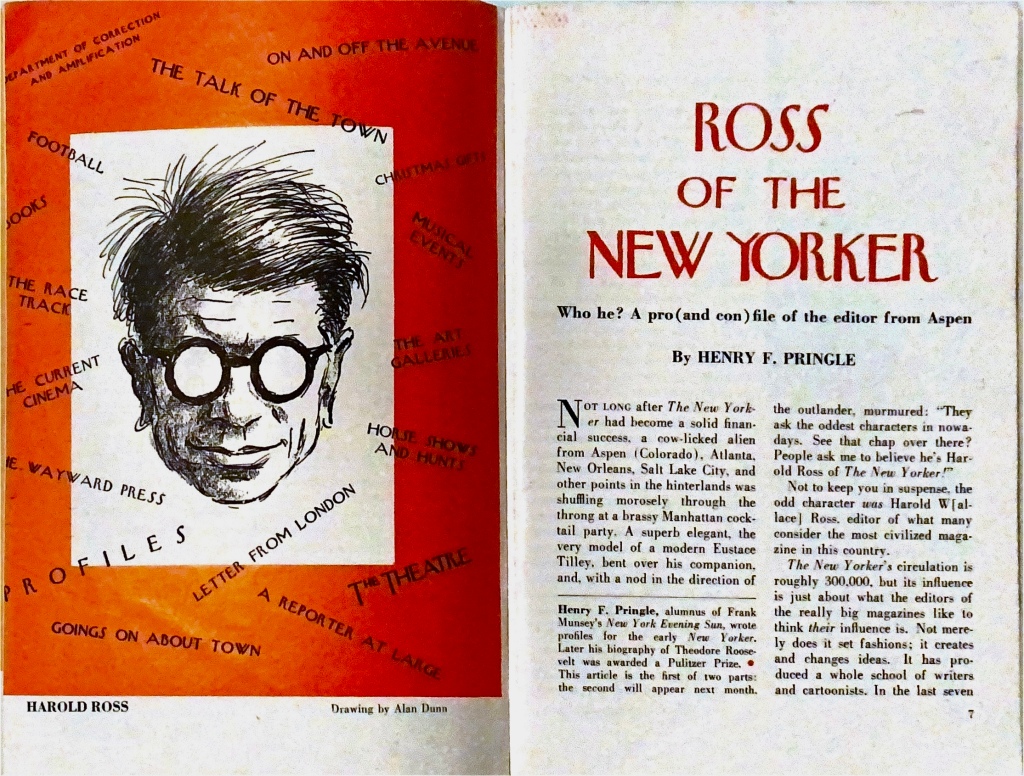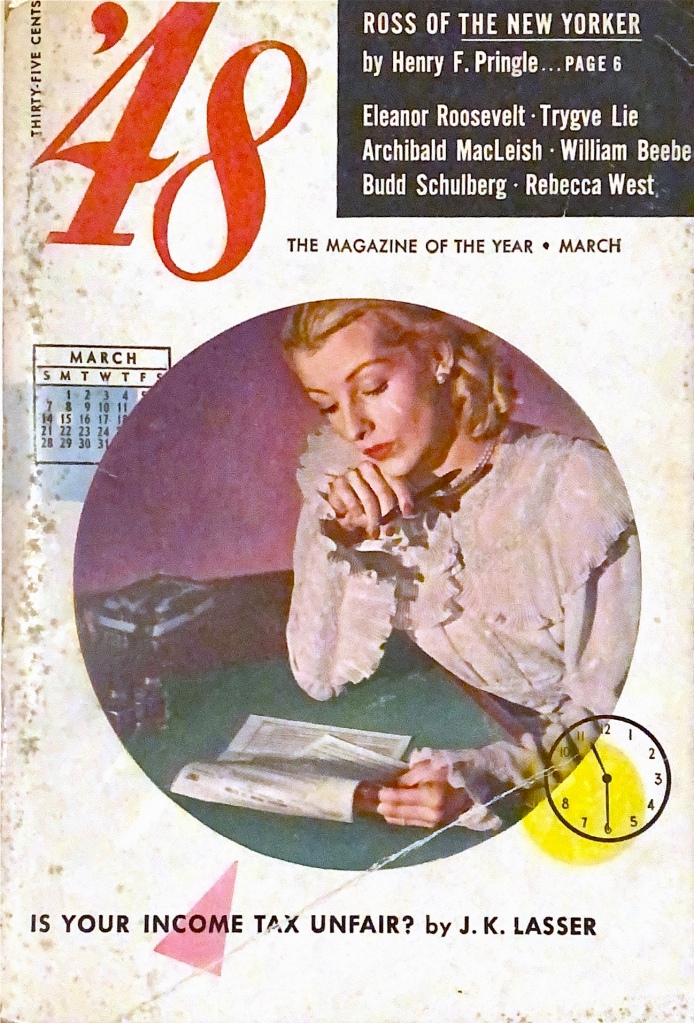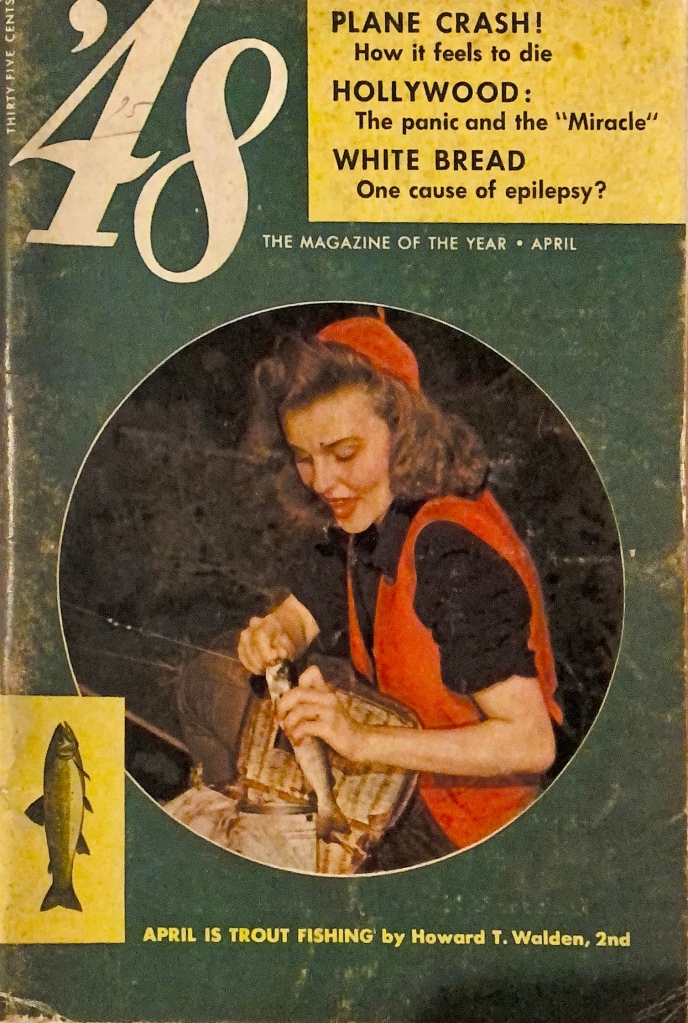|
Getting your Trinity Audio player ready...
|
From the Mr. Magazine™ Vault
Digital has become an easy scapegoat to killing print. No one will think twice to look at the real reasons for killing a print product because there is a suspect in the wings waiting to be accused: Digital.
There is nothing new in the world of magazines and their lifecycle. There has been always a time to be born, a time to die, and a time to be reborn. It is the cycle of life. Almost with every invention of a new medium, the new is blamed for the death of the old. Remember television, the scapegoat of the 1960s?

Well, digging into my magazine collection, I came upon a two parts article about Harold Ross, the founder of The New Yorker, in 48 The Magazine of the Year from (you guessed it) March and April of 1948. This magazine was published from March 1947 until June 1948 and was owned by a group of writers, artists, and photographers.
The Harold Ross article “Ross of The New Yorker” was written by Henry F. Pringle, a Pulitzer Prize winner. “Ross, editor of what many consider the most civilized magazine in this country,” writes Pringle.
He goes on to write, “The New Yorker’s circulation is roughly 300,000 (remember this is 1948), but its influence is just about the editors of the really big magazines like to think their influence is. Not merely does it set fashions; it creates and changes ideas. It has produced a whole school of writers and cartoonists…”
Ross has shaped The New Yorker “into a legend of taste, wit, and comely prose, a hornbook of the intelligentsia, begetter of literary fashions, and source of profits.”
Here are some of the facts that I have learned about Harold Ross, founder and editor of The New Yorker :
Ross “not only read every line of copy that goes into the magazine but wrangles over practically every one of the 50,000 words that make up the average issue.”
“Three editors, including Ross, read separate galley proofs and make detailed suggestions and queries… Before the article goes to press a fourth editor, a fresh mind, attacks the story and turns in final suggestions. Altogether there are eighteen working copies of each set of proofs of every article…
This may sound overmeticulous, but out of it comes the extraordinarily high standards of style and reporting in the nonfiction pieces. But it also accounts for a certain singleness of tone, which has caused a former employee to remark, testily, that The New Yorker is written by one first-rate writer with a hundred names.”
“Ross actually admires creative people – this is also is rare among “important” editors – and that is why he has gathered so many of them about him… Perhaps it is inexact to say that Ross admires creative people. Really it is their output, not themselves, he cares about. The make up of the magazine is the clue to his approach to writers: the lack of anything more than a skeleton table of contents, the unpretentious heading, the overly modest byline at the end of each article.”
“Ross and his business department speak to one another about as often as Macy’s does to Gimbel’s. Although in the same building, the editorial and advertising offices are separated by two stories… The editor will brook no editorial interference from the business management; and The New Yorker’s advertisers have sometimes come in for pretty severe handling in its columns.”
“Personally a conservative, Ross has never allowed his social and political convictions to influence the editorial policy of the magazine. He complained that all the good writers these days are liberals or radicals; but, if they’re good, he prints their stuff.”
And last but not least, “Ross has never allowed his name to appear on the masthead, declines to read anything written about himself, and protested vigorously, though not unamiably, when told that the present article was in prospect.”
Magazines done right. That’s my only comment. What say you?
Samir “Mr. Magazine™” Husni
Director of Magazine Innovation Center,
University of Mississippi
Original content republished with kind permission.




